Those of you who have done this for a while with all the new paints out there, what are your preferences and why?
Is it harder to learn with soley acrylics or acrylics then to oils? What's everyone's preference? Like I said I my other post. Looking to get started. Jim
I've got an accumulation of different media and brands in my
Farbkastl, some reaching back to when I was a kid, others acquired in more recent years:
Water-based acrylics, ie, acrylic-based paints that are water-soluable:
Andrea
Vallejo Model Color
Lifecolor (about a half-dozen paints, the US Army ETO 1944 colors, thanks to Hershbell (oldtrousers) for giving me the set to play with
Craft-store paints-Americana, Folk Art, Apple Barrel
I have come more and more to use water-based acrylics for figures, because with a wet palette, I find them easy to use and to work quickly. And craft-store brands satisfy my Dutchy sense (ie, cheapness), because the prices are right for the amount and they go a long way. They can be airbrushed, too.
Lacquer-based acrylics:
Basically, that's Tamiya's acrylic colors, the X and XF series. I use for painting figures, but also for my scale models, especially for airbrushing. They're formulated for airbrushing, and once I realized that, and realized to use Tamiya's proprietary acrylic thinner, I could hand-brush them without any issue, too.
Enamels:
Mostly Testor and Model Master, now discontinued. Thinned with mineral spirits, and mostly airbrushed, too.
Lacquers:
Mostly Hobby-san and Color-san (ie, Mr Hobby, Mr Color), some old Gunze-Sangyo. Mostly airbrushed, thinned with lacquer thinner, though in some applications, brushed by hand right out of the jar.
Water-based acrylic enamel: Pactra's old brand, from when I was a kid (in the 70s). Back then, I had no idea what different kinds of paints were, they were just paints, and I bought 'em for color. Pactra had a royal blue that was perfect for Prussian uniforms, and a green that was perfect for
Jäger uniforms. When I finished that jar, I was hard-pressed to find a replacement for it.
Oils: Schminke-Mussini. I thin them with mineral spirits, too. I bought myself a bunch of oils way back around 1990, after I had taken up the hobby, and decided that I would learn to paint flats, "just like the Germans do". I never did, and use the oils more now for weathering models. I do have a stash of flats, though...
Primers:
Tamiya's Fine Surface Primer in rattle-cans, white, light gray, or gray, depending on the subject
Rustoleum and Walmart's house brand automotive primers. They're a little coarser than Tamiya's Fine Surface Primer, but for most uses, they worked just fined, maybe with a touch of buffing as needed. But I ran into a technical problem with the cans of both brands-they would clog at the point where the nozzle plugged into the can. Nothing I tried could clear the jam, and I was left with half-filled cans I couldn't use.
Thinners:
Tamiya's X-20 acrylic thinner, for Tamiya acrylics (though lacquer thinner works well thinning the paint for airbrushing, and it enhances the matte effect of flat colors. Not for hand-brushing, of course)
Sunnyside low-oder mineral spirits (it was what was on the shelf at the hardware store)
Rustoleum lacquer thinner (it was what was on the shelf at AutoZone)
Generic isopropyl alcohol (sometimes, for thinning water-based acrylics in the airbrush)
Wet palette: Redgrass Games' Everlasting Wet Palette. I like the smaller footprint on the bench, compared to other brands, and the paper is very, very good. But I started out with a home-made wet palette, to get the hang of using it. I made it from a takeout container, a kitchen sponge, and brown packaging paper. I was happy with it, too, but eventually the plastic lid cracked, the paper would wear and shed fibers into the paint, and the sponge got funky very quickly, even though I would nuke it to kill any mold. But I recommend using a wet palette, if you use water-based acrylics. It helps keep the paints consistently thinned, and you can use it to save a bunch of colors from one session to the next, avoiding having to mix a fresh set of colors each time.
An additional tip...
I travel frequently to meetups and club meetings, and take my supplies with me. After various solutions, I've wound up using this Sears Craftsman toolbox, to carry most of my paints and supplies:
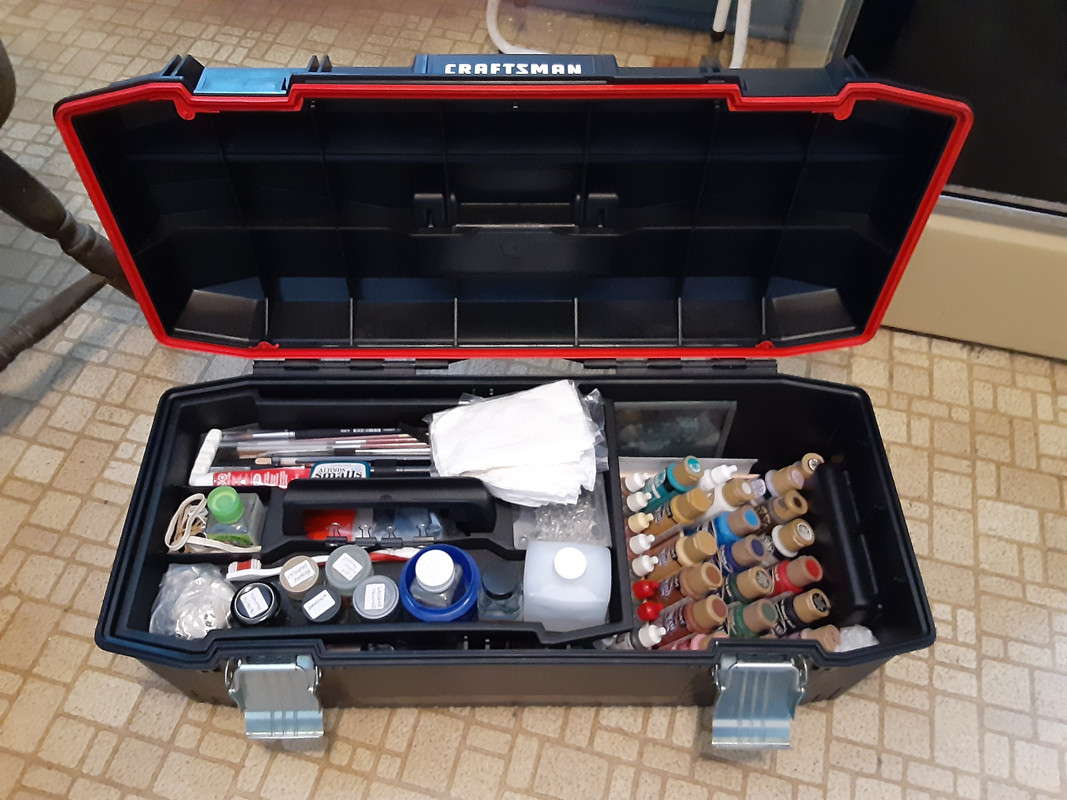
I also take this pine toolbox, with more paints and tools:
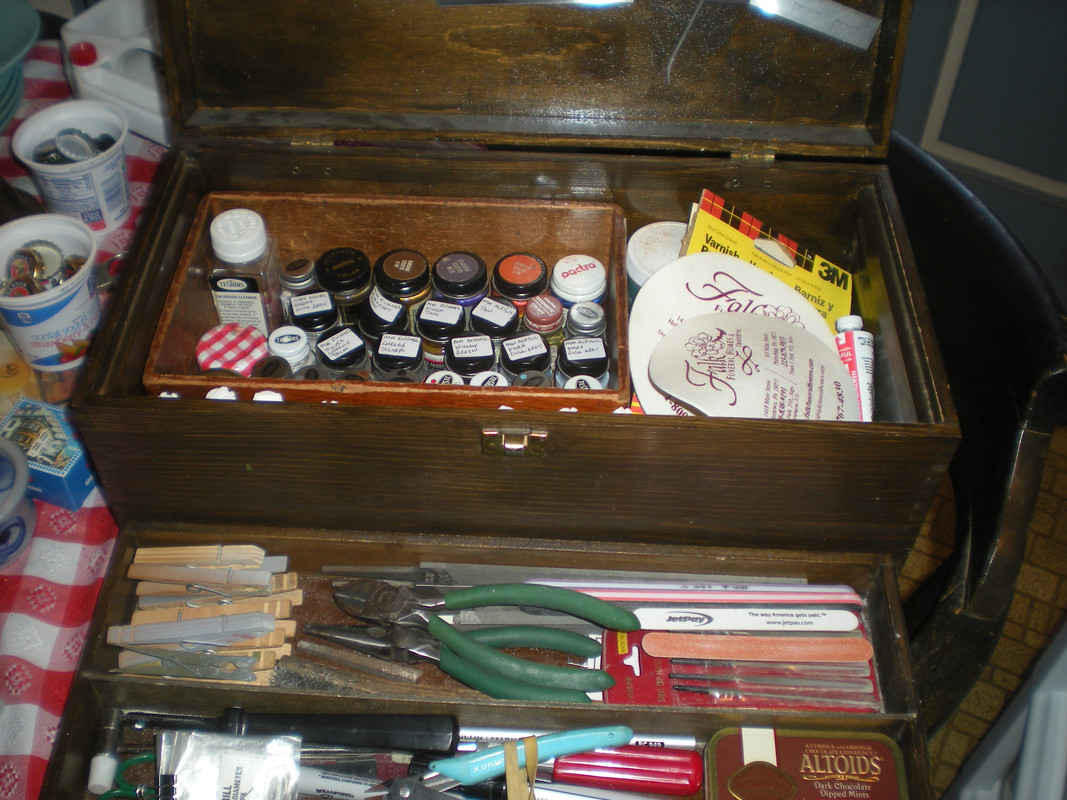
I got that for myself when I bought my oils 32 years ago. It was unfinished pine; I stained and sealed it. I got that and the oils at Dick Blick Art Supply, by the way.
To carry brushes, I got this caddy (an eBay find). I like the OD color:
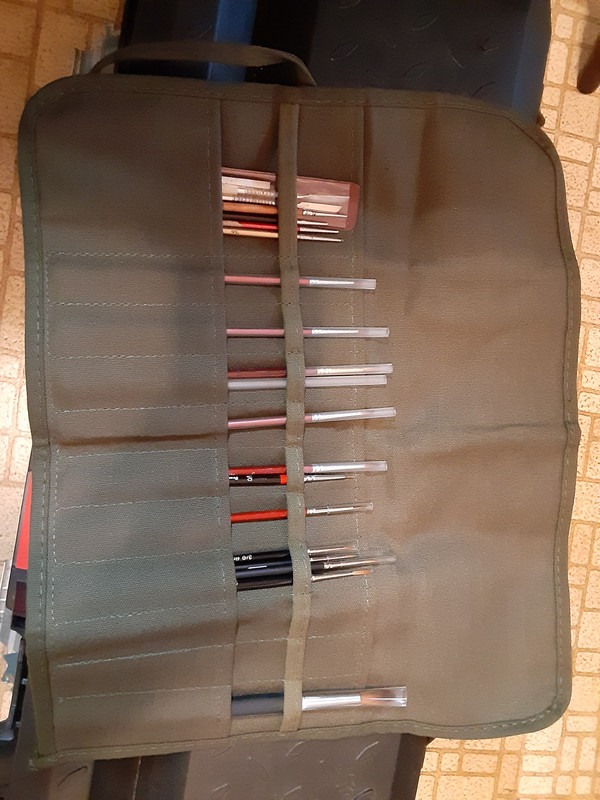
I was looking for something to carry my brushes. I thought of a pencil box of some kind, but couldn't find a good one. I stumbled across cloth tool caddies, but they were all covered with flowers, etc. This is a no-nonsense type. When I came to the idea, I wondered why I hadn't thought of it before-many of my sets of wrenches, wood chisels, files, etc, in my garage are stored in roll-up caddies like these.
And finally, to keep brushes handy while painting, I use this old milk glass dental tool tray (thanks to Doctor Joe for this antique!):
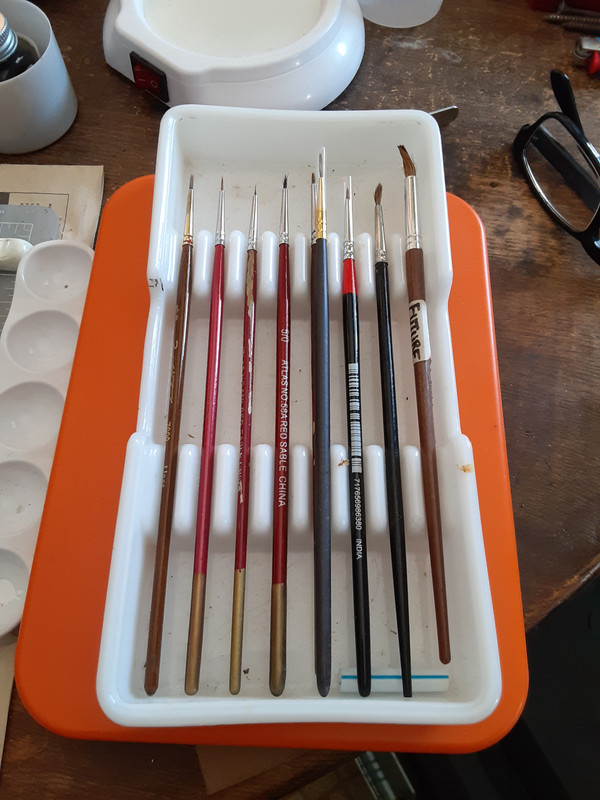
and this paint brush rest, inspired by chopstick rests. I made it quickly out of a bit of Aves:
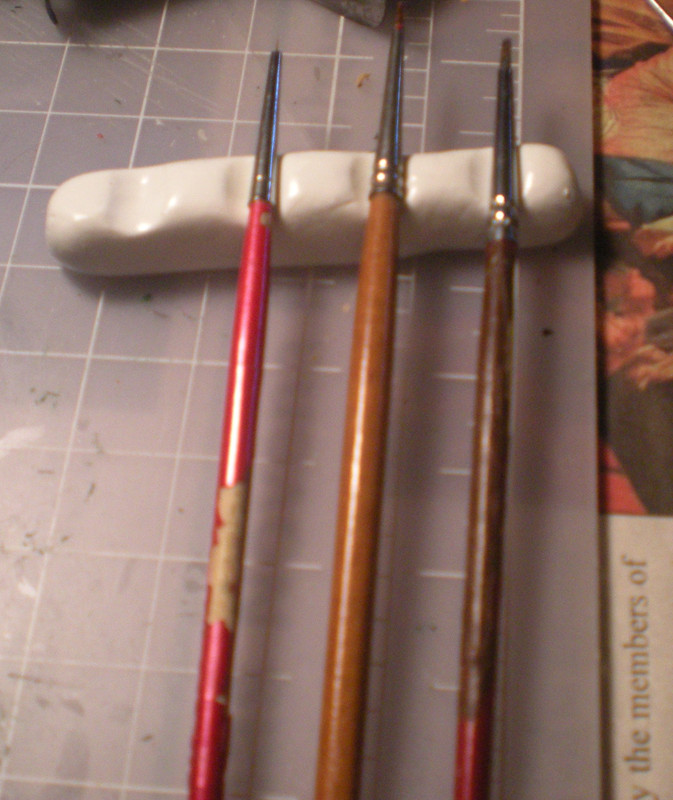
I carry a desk lamp in that tool kit, too. Everything I need for a working session.
Hope that all helps!
Prost!
Brad





